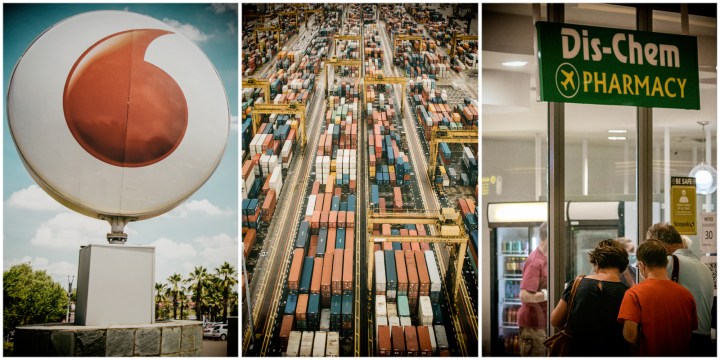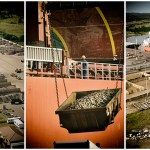PHANTOM SHARES
The Finance Ghost: The lowdown on Dis-Chem, Vodacom, Santova and Richemont

The market prescribed succession and Dis-Chem delivered.
It happens far too often in the market that a CEO leaves a group with immediate effect. There’s always some feel-good nonsense about personal goals and expanding horizons. Spoiler alert: any CEO leaving with immediate effect isn’t finding those new horizons by choice. Something went wrong.
Dis-Chem sits at the polar opposite of the succession spectrum. This has been a carefully planned and well-orchestrated exit for Ivan Saltzman, a retailer whose role in the retail pharmacy market is akin to Raymond Ackerman’s legacy in grocery retail. In both cases, handing over the reins doesn’t mean that these retail giants won’t still be found walking the shop floors.
Having co-founded the business with his wife Lynette, Saltzman now passes the baton to Rui Morais. It’s been quite a journey from a single store into South Africa’s leading retail pharmacy chain (and most trusted last-minute Mother’s Day gift stockist).
Morais moves into the top job from the CFO role, which will be filled by another internal candidate, Julia Pope. Again, a perfect example of succession planning. Never mind local companies that could learn from this — even LVMH should take heed of what has happened here. And to strengthen alignment with the new team, the Saltzman family plans to sell a 3.75% stake in Dis-Chem to the executives and senior management over time.
The new team is inheriting a thriving business. Excluding Covid vaccines, Dis-Chem’s group revenue has increased by 9.0%. The projected Heps for the year ended February is expected to grow by between 16.5% and 19.0%. With these impressive figures, the share price is currently at a trailing price/earnings multiple of around 20.5x.
After years of being too expensive to be a reasonable investment, Dis-Chem’s multiple has unwound to the point where the growth rate is getting close to that magical rule of thumb: a PEG ratio of 1. This is calculated by dividing the multiple by the growth rate. The principle is that a 20x P/E multiple should require a 20% growth rate to be justified.
That multiple is starting to look especially interesting based on Dis-Chem’s strategy to turn up the heat on its store roll-out. The company has acquired a new distribution centre in Gauteng for R502-million. This move will increase the group’s warehouse space by a whopping 75%.
With the share price down nearly 30% in the past year, this is a quality retailer that is becoming worthy of a look for investors. It’s on my watchlist.
Vodacom walks like an Egyptian
Pyramid scheme jokes aside, the R43.6-billion acquisition of a 55% stake in Vodafone Egypt is a big step for Vodacom. This is the group’s largest deal in history, cementing a strategy of expansion in north and east Africa while rival MTN prefers to have its cash trapped in west Africa.
This has a significant impact on the latest group results, as Egypt was only consolidated in December. In other words, investors need to read Vodacom’s reports very carefully, as there is information on how Egypt performed over the past 12 months even though the investment was only consolidated for part of the year.
Leaving aside the acquisition (and thus using “normalised” numbers), Vodacom grew revenue by just 4.9% and Ebitda by only 3.6%. Margins in the telecoms industry are under serious pressure, especially in South Africa where load shedding is causing strain.
Imagine spending a cool R4-billion on backup power solutions since 2020 and another R300-million on diesel, security, and maintenance in the past financial year. These are relatively small numbers in the context of total net profit, but they have been a severe drain on growth as Vodacom is already a mature, low-growth business in the South African market.
Cash conversion has never been the telecoms industry’s best feature, with between 13% and 14.5% of revenue invested in capital expenditure. In addition to the significant need for investment in the existing infrastructure, Vodacom needs to deliver on its fibre strategy (the deal with CIVH for Vumatel and Dark Fibre is waiting for the Competition Commission’s green light) and its growth ambitions in Africa, all while managing a balance sheet that has a lot more debt on it after the Egypt deal.
Long story short: the dividend payout ratio has dropped to 75% of headline earnings and that is a risky move, as investors now need to be convinced that Vodacom can reinvest capital and beat its cost of capital. The telecoms industry isn’t famous for being able to do that.
Santova: the little engine that could
Our local market is notorious for being a graveyard for small- and mid-cap valuations, with companies trading at earnings multiples that are depressingly low. In a rare move, Santova’s share price chart has charted a course for the moon, up by 22% in the past month.
The company has been a winner at a time when supply chains were crunched and caused huge disruptions in almost every industry. Unlike Grindrod Shipping (which just reported a loss in the latest quarter), Santova is a relatively capital-light player in this industry, offering services rather than vessels or aircraft. This means a lot of working capital rather than fixed assets, which isn’t a bad thing. A return over five years of roughly 180% is evidence of that.
It’s impossible to know for sure whether the price will retract. If we could know such things with certainty, we would all be sunning ourselves on yachts rather than reading about container ships and related services.
Still, with Heps growth in the year ended February of 22.1%, Santova is doing its bit to get its investors closer to yacht status.
A canary in the diamond mine?
With the luxury industry absolutely shooting the lights out and trading at valuation multiples that reflect that performance, any slowdown in the sector could be very unpleasant for investors.
It’s a complicated space, with a global customer base and products ranging from Louis Vuitton handbags through to timepieces made by Maisons at Richemont that you’ve never heard of. Even Ferrari falls squarely into this sector.
The performance hasn’t been driven by China in the past year. Far from it, in fact, with some recovery in China only visible in the fourth quarter of Richemont’s record year. That’s just as well, because De Beers made a very interesting comment when reporting on the latest diamond sales cycle.
The CEO notes a “slower pace of recovery in consumer demand from China than was widely anticipated”. Keep a close eye on this. DM
After years in investment banking by The Finance Ghost, his mother’s dire predictions came true: he became a ghost.
This story first appeared in our weekly Daily Maverick 168 newspaper, which is available countrywide for R29.



















 Become an Insider
Become an Insider
Comments - Please login in order to comment.